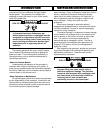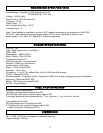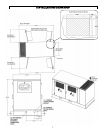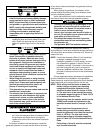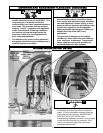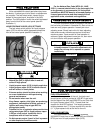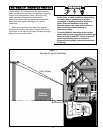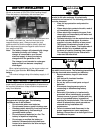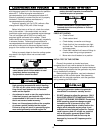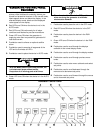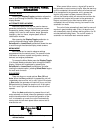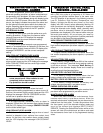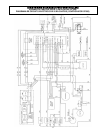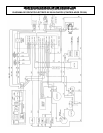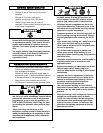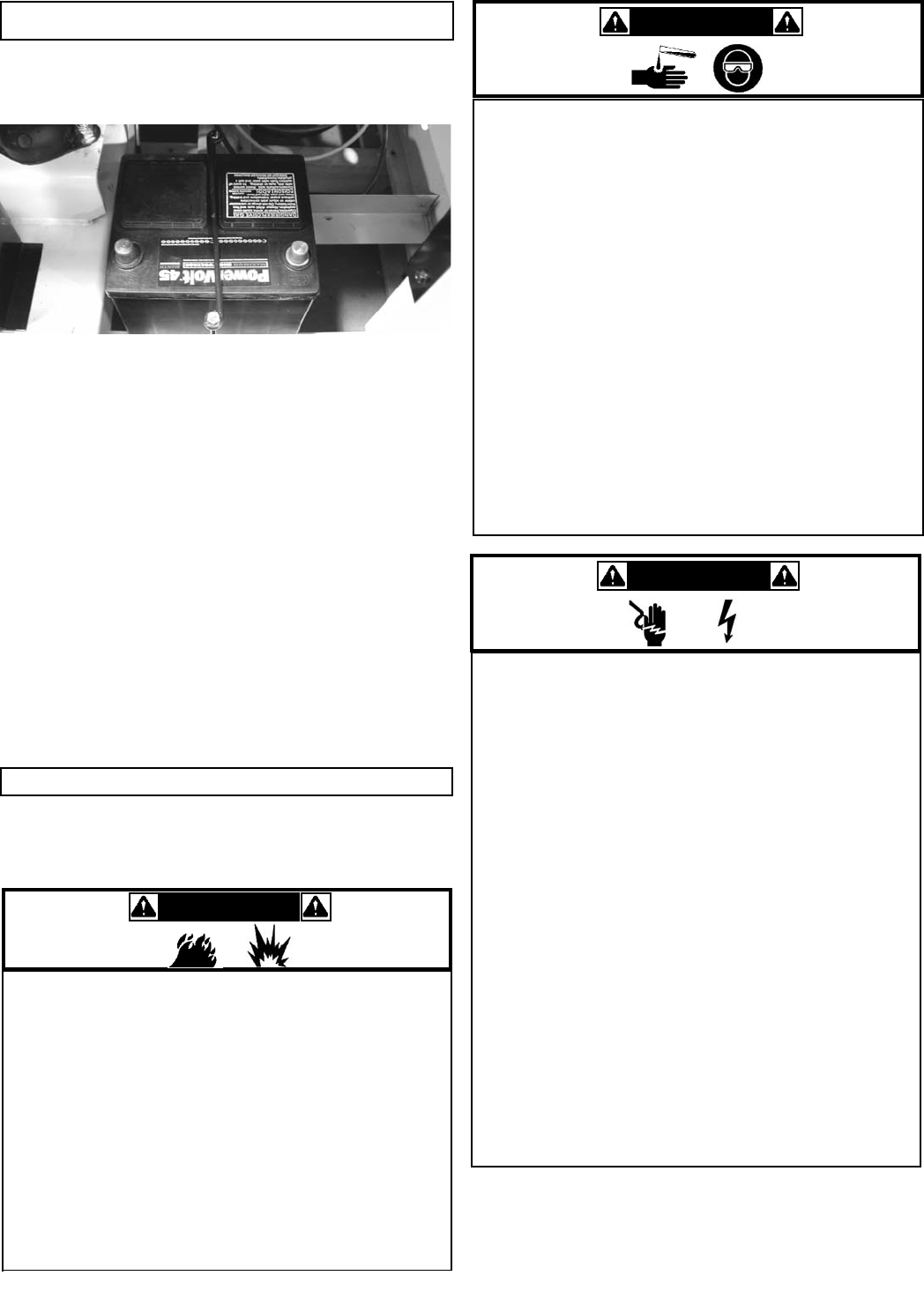
Minimum recommended battery size is a BCI Group
26 with a minimum of 550 CCA (Cold Cranking Amps).
Place the battery in the battery rack as shown and
secure using the holddown hardware provided.
Once the battery has been placed and tied down with
the battery hold down bar, connect the leads to the
respective battery post. Always connect the (red)
positive cable first and the negative (black) cable last.
When disconnecting remove negative cable first and
then positive lead last.
Note: The battery charger will automatically charge
the battery to keep a full charge. This
charger is connected to your normal
electrical supply to keep your battery
charged while the generator is idle.
The charger is not intended to recharge a
battery which has become completely
discharged.
When replacing batteries, use the same number and
the following type batteries: BCI Group 26 vented
battery.
The nominal voltage rating of the battery supply is 12
volts.
Servicing of batteries are to be performed or
supervised by personnel knowledgeable of batteries and
the required precautions. Keep unauthorized personnel
away from batteries.
The electrolyte is a dilute sulfuric acid that is
harmful to the skin and eyes. It is electrically
conductive and corrosive. The following procedures
are to be observed.
• Wear full eye protection and protective
clothing.
• Where electrolyte contacts the skin, wash it
off immediately with water.
• Where electrolyte contacts the eyes, flush
thoroughly and immediately with water and
seek medical attention.
• Spilled electrolyte is to be washed down with
and acid neutralizing agent. A common
practice is to use a solution of one pound
(500 grams) bicarbonate of soda to one
gallon (4 liters) of water. The bicarbonate of
soda solution is to be added until the
evidence of reaction (foaming) has ceased.
The resulting liquid is to be flushed with
water and the area dried.
A battery presents a risk of electrical shock and a
high short circuit current. The following precautions
are to be observed when working on batteries:
• Remove watches, rings or other metal
objects.
• Use tools with insulated handles.
• Wear rubber gloves.
• Do not lay tools or metal parts on top of
batteries.
• Disconnect charging source prior to
connecting or disconnecting battery
terminals.
• Determine if the battery is inadvertently
grounded. When inadvertently grounded,
remove source of ground. Contact with any
part of a grounded battery is capable of
resulting in electrical shock. The risk of such
shock is reduced when such grounds are
removed during installation and
maintenance.
• Failure to connect and disconnect in the
proper sequence can cause equipment
damage. Ensure there is a clean tight fit from
the cables to the post.
WWAARRNNIINNGG
CCAAUUTTIIOONN
WWAARRNNIINNGG
Lead-acid batteries present a risk of fire because
they generate hydrogen gas. The following
procedures are to be followed:
• Do not smoke when near batteries.
• Do not cause flame or spark in battery area.
• Discharge static electricity from body before
touching batteries by first touching a
grounded metal surface.
• Do not dispose of batteries in a fire. The
battery is capable of exploding.
• Do not open or mutilate the battery or
batteries. Released electrolyte has been
known to be harmful to the skin and eyes
and to be toxic.
B
B
A
A
T
T
T
T
E
E
R
R
Y
Y
S
S
A
A
F
F
E
E
T
T
Y
Y
I
I
N
N
S
S
T
T
R
R
U
U
C
C
T
T
I
I
O
O
N
N
S
S
B
B
A
A
T
T
T
T
E
E
R
R
Y
Y
I
I
N
N
S
S
T
T
A
A
L
L
L
L
A
A
T
T
I
I
O
O
N
N
12




